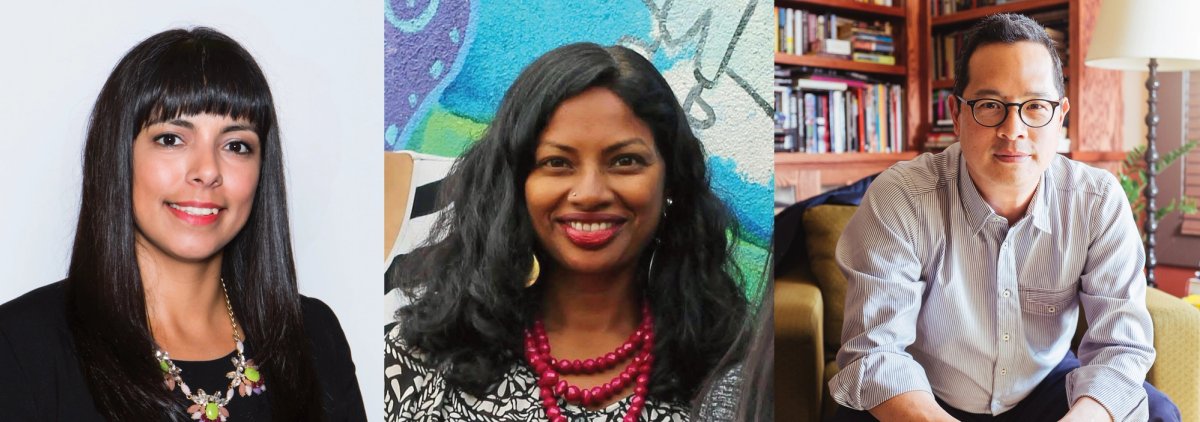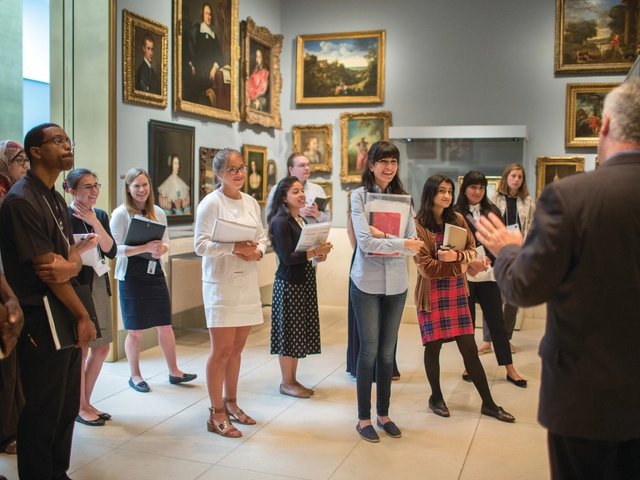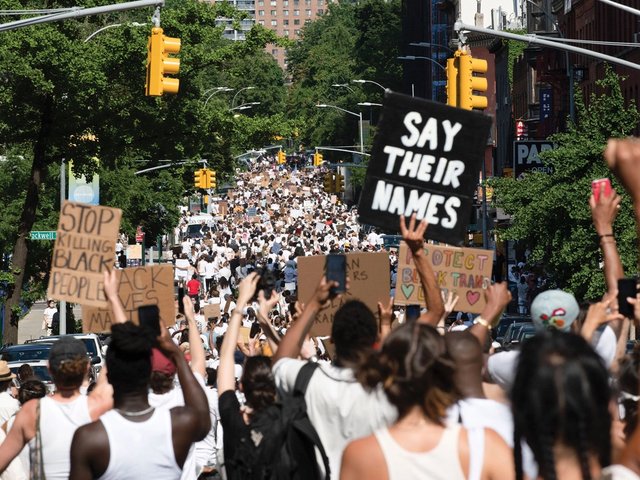On the heels of George Floyd’s death and Black Lives Matters protests, many American museum directors have stepped up their efforts to try to identify and dismantle systemic racism in their organisations. They want to “actively listen” when it comes to issues of racism, diversity and inclusion. But who exactly are they listening to? Along with empowering employees of colour to different degrees, many museums have been enlisting the help of racial equity consultants.
Run as non-profits and for-profit businesses alike, these firms offer “introduction to white supremacy” talks, workplace culture assessments, staff anti-bias training, and executive anti-racism workshops. Most help museums organise internal task forces as well.
Their work goes by various acronyms, depending on their emphasis, including DEI (diversity, equity and inclusion), IDEA (inclusion, diversity, equity and accessibility) and JEDI (justice, equity, diversity and inclusion). And their services are in great demand these days, with one firm creating a Google Doc for Black-led DEI consultants that currently lists more than 450 entries.
“The seismic events of the past six months have shown us inequity laid bare, whether it’s the murder of Mr Floyd or Covid-19 impacting Black and brown people at higher rates, and I think museum directors are cognisant of that,” says Christine Anagnos, the director of Association of Art Museum Directors (AAMD). Anagnos, who says roughly 85% of her members identify as white, has previously organised anti-bias seminars for her group and last year enlisted two of the leading organisations to run web-based sessions: the non-profit Race Forward and the commercial firm VallotKarp, both based in New York.
Outside expertise
“This is about expertise,” says the San José Museum of Art director Susan Sayre Batton, who hired Race Forward in 2019 to engage in DEI work institution-wide. “We are not experts in facilitating racial justice conversations among staff and stakeholders, so we seek the expertise of consultants,” in much the same way as museums hire “consultants on strategic planning and capital campaigns—other exceptional work that needs to be done institutionally”.
Jeff Chang, the Berkeley-based Race Forward vice-president who specialises in the arts, has also worked with the Oakland Museum of California and the San Francisco Museum of Modern Art. Be The Change Consulting, an Oakland firm founded by Sangita Kumar, is providing staff training across town to the Fine Arts Museums of San Francisco. VallotKarp has worked with the Metropolitan Museum of Art and Philadelphia Museum of Art, among others.
Meanwhile, since its founding in 2014, the non-profit collective Enrich Chicago has pioneered a more collaborative model, with a mix of cultural groups sharing resources, plans, insights and also missteps at regular meetings. Both the Art Institute of Chicago and the Museum of Contemporary Art (MCA) Chicago are now members.
MCA’s deputy director Lisa Key, who has also joined the Enrich Chicago board, describes the group as a “great source of knowledge” and resource for staff training. One training session at MCA for customer-facing staff, such as visitor services and retail, took place on the Monday after Floyd’s killing.
In 2021, four more museums are set to join the 40-member Enrich group: the Smart Museum of Art, Gallery 400, the Museum of Contemporary Photography, and the Block Museum, all of which are affiliated with universities in Illinois. Enrich’s director, Nina Sánchez, says that joining the collective is not a simple, one-step process: it requires, along with membership dues, a commitment from the institution’s leader to participate directly and to attend a two-and-a-half-day workshop.
“If they don’t run away screaming,” Sánchez says, “then they’re opting into an annual commitment they can renew at their discretion.” The executives’ commitment includes, she says, “forming a committee or task force for leading transformation within their organisation” and “participating in quarterly meetings where they share updates on their anti-racism work”. She avoids the “racial equity” term: “We feel it has been co-opted and no longer has teeth.”
Some institutions go farther. To supplement its work with Enrich, MCA has conducted a lengthy search and “is on the brink of signing an engagement with a social justice-oriented consultant in Chicago”, Key says.
Too much for one individual
Even museums that have recently made high-profile staff hires of equity executives are still working with outside consultants. Anne Pasternak, the director of the Brooklyn Museum, has named Keonna Hendrick as its new DEIA director but plans to continue working with outside experts such as Melissa Crum from the Mosaic Education Network. “This work is so huge, one person can’t do it all,” Pasternak says.
Ann Philbin, the director of the Hammer Museum in Los Angeles, which has just appointed Russell Davis as its chief of human resources, equity and engagement, says it is looking for a new consultant. It worked in 2015 with Crossroads Antiracism Organizing and Training, a Midwest group, and in 2019 with the People’s Institute for Survival and Beyond, from New Orleans.
“We’ve learned a lot from every consulting group we’ve had,” Philbin says. “But this time we want to customise the process. If you’ve been doing it for a half-dozen years, some trainings can be a little cookie-cutter.” This time she is only considering local consultants “for two reasons,” she says. “I don’t want this to all take place on Zoom, and I want them to know the context of the community where we’re working.”
Lori Fogarty of the Oakland Museum of California, which already had a diversity initiative when she became its director in 2006, has also shifted to more specialised support. She has worked in the past with Race Forward and LeaderSpring on board and staff training, but this year has hired five different racial equity consultants, all individuals, including one specifically to create a more inclusive budgeting process.
“Like many museums, we will have to make a lot of reductions moving into our fiscal 2022 budget,” Fogarty says. “We want to bring an equity lens to this process to make the decision-making more transparent and to include the folks most impacted by budget decisions.”
She points out that many museums “treat DEIA work as a separate strand of activity and leave financial planning in the hands of six people who have always made those decisions”. Real change, she says, “will move into all core areas of the institution: exhibitions, acquisitions, staffing and also financial decision-making”.




